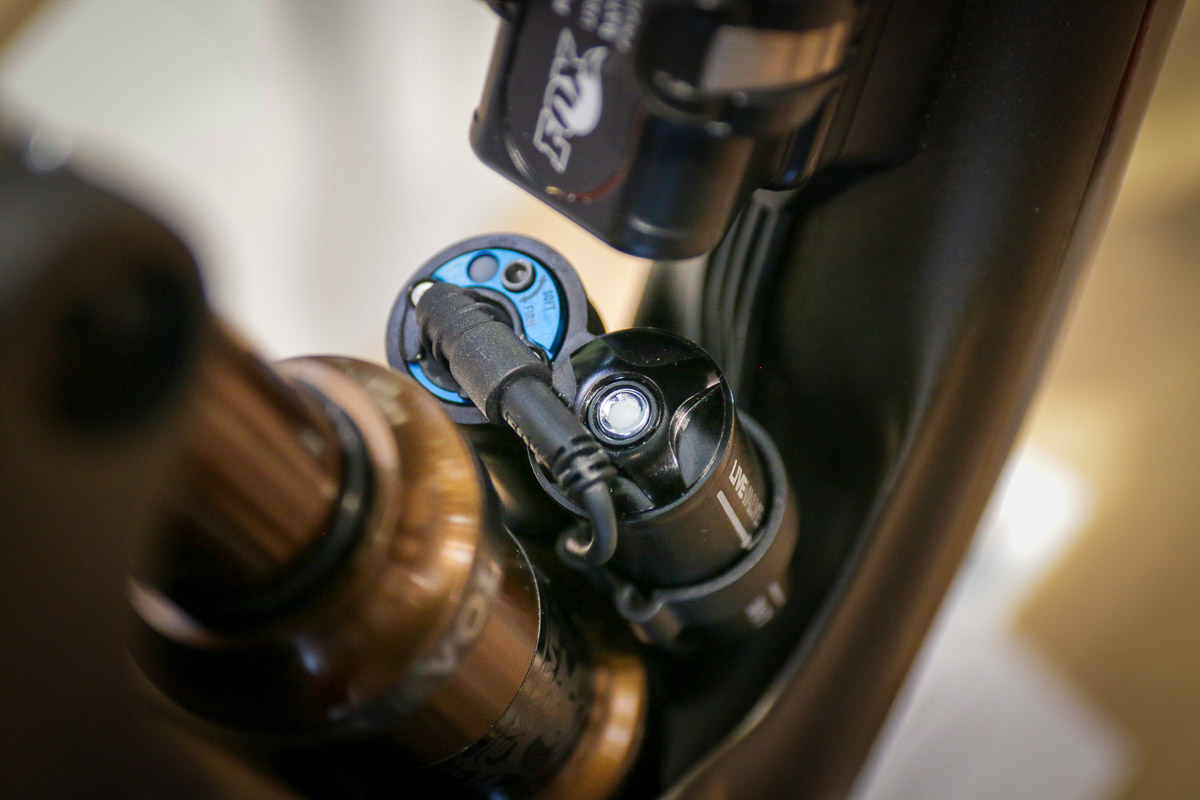Quietly lurking behind the scenes for just over a year now, 20mm Boost (or OverBoost as we’ve heard it called unofficially) is coming. Yes, technically it’s a new standard, but it’s one that may actually make life a bit easier when it comes to existing and future hub options. We’ve heard rumors that the big brands will be moving to 20mm Boost spacing in the future, and smaller brands like DVO and RST are already there.
Existing 20mm forks already use a 110mm hub spacing, so that number does not change for 20mm Boost. What does change is the spacing of the brake mount. Boost places the brake tabs 5mm farther outboard which gives hub manufacturers more room to space out the flanges for stronger wheel builds. But just as importantly, the change in brake spacing gives 20mm Boost the same dimensions as 15mm Boost which gives forks like the RST Stitch and RST Rebel the option to run either 15mm Boost or 20mm Boost axles and hubs by simply adjusting the diameter of the axle’s insertion. Some forks, like the RST Killah, will be dedicated to 20mm Boost.
That will make many 20mm Boost forks compatible with existing 15mm Boost wheelsets. Even better – since the brake spacing is wider than previous 20mm hubs, you should be able to use older 20mm non-Boost hubs with an adapter to make them compatible with 20mm Boost forks – the adapter will simply space the brake rotor out 5mm. The only thing you won’t be able to do will be to run 20mm Boost hubs on existing 20mm forks (until someone makes an adapter for that as well).
The takeaway? Don’t freak out. 20mm Boost is all positives, offering stiffer wheel/fork systems and easy backward compatibility for most existing wheels.
More tuning options
For a while, most suspension manufacturers were looking to simplify things. We moved to single air systems that auto-filled the negative chamber. SR Suntour stepped back from dual rebound and compression adjustments. All in the name of user friendliness. Now, though, some brands are heading back to denser feature sets in order to give riders more tuning options than ever. Among them, Formula is leading the way with an astounding array of options.
The new Selva R (coming this fall) will work with all of their CTS tuning chips, which lets you customize the compression damping baseline then fine tune it with their standard external adjustments, plus their new NeoPos dynamic volume spacers. What it adds on top of their other forks is a dual-air positive chamber that lets you set the positive and negative chambers independently.
Out back, the new Scott Genius gets a proprietary Ramp Control adjustment that lets you choose whether you want the shock to be progressive or linear.
From our perspective, extra settings and controls are a mixed blessing. We love being able to fiddle with things and get them perfectly dialed. But it’s easy to go wrong and end up with suspension that feels terrible. The trick is knowing what you’re doing, what each of the controls means and how it affects the ride. The good news? You don’t have to upgrade to a fork, shock or bike with all the bells and whistles. Stock tunes and the standard adjustments are usually quite good for most riders. The other good news? We have a pretty killer Suspension Set Up Guide that you can download for free.
The flip side of this is what could be coming with Fox Live, also spotted on a Scott. The system puts sensors on the fork and rear triangle, feeds them into a central control unit, then automatically adjusts the rear suspension to the terrain. Or at least, that’s the idea…details on that system won’t be announced until some time in August, but the idea seems to be that the computer will do the tuning for you so you won’t have to fiddle with all these knobs.




